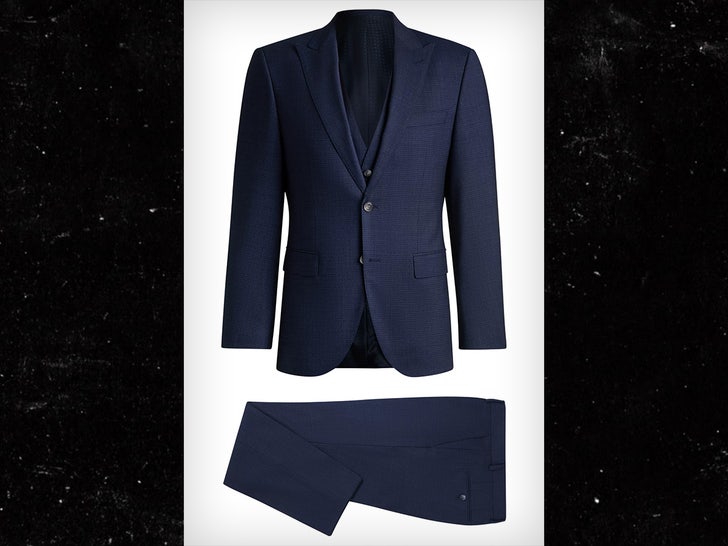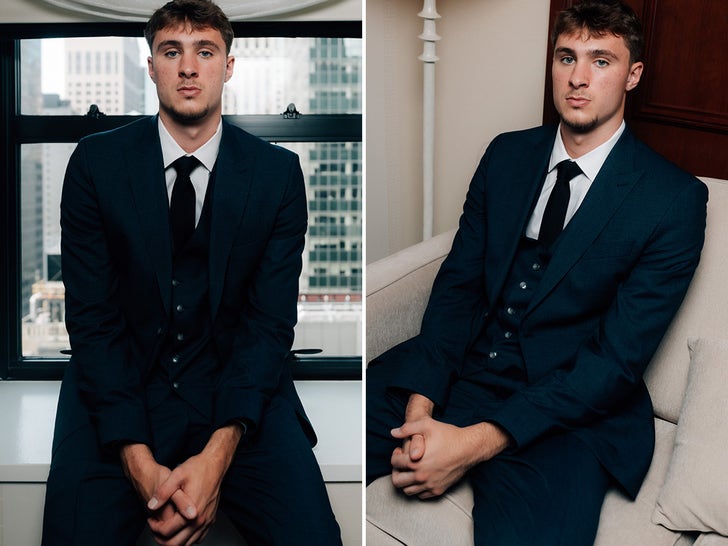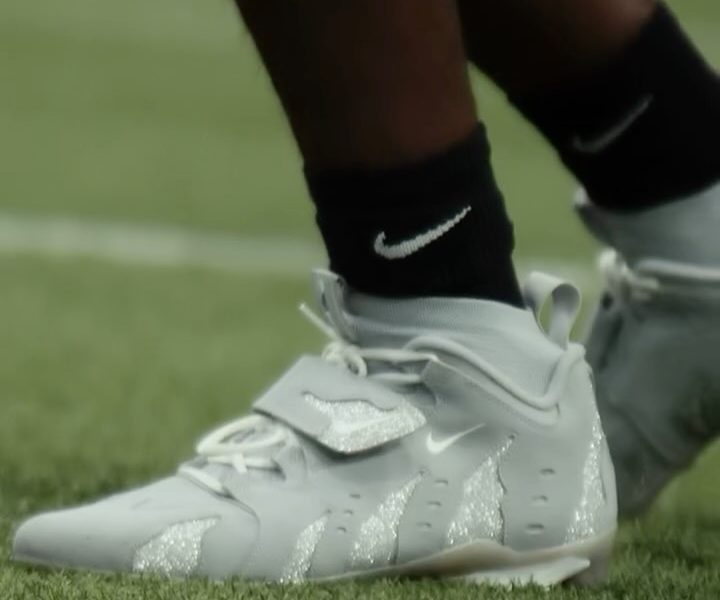NIL
Athletic director Scott Barnes discusses House settlement, future of NIL at Oregon State
A new general manager, varied and creative funding sources, and a focus on overachieving given the resources. These are among the shifts for Oregon State athletics as it braces for the revenue sharing era in college sports beginning July 1. OSU athletic director Scott Barnes said in a phone conversation this week that he is […]

A new general manager, varied and creative funding sources, and a focus on overachieving given the resources.
These are among the shifts for Oregon State athletics as it braces for the revenue sharing era in college sports beginning July 1. OSU athletic director Scott Barnes said in a phone conversation this week that he is “excited” about what this means for the Beavers, who are in the process of restructuring their athletic department as the Pac-12 emerges from the ashes of conference realignment.
The framework laid out by the House settlement includes a $20.5 million revenue sharing cap per school, a tracking and reporting system for the NCAA to monitor NIL deals, an enforcement arm, and additional regulation to oversee athlete’s payments.
Oregon State and the Pac-12 are joining the four Power conferences in throwing their weight behind the SCORE act in Congress, which among other things would prevent student-athletes from being classified as employees in the revenue sharing era.
The Oregonian/OregonLive spoke with Barnes — who also serves on the committee tasked with crafting and implementing rules based on the House settlement — for a Q&A discussing the path forward for OSU and for college sports:
Q: In general, how will the House settlement immediately impact schools like Oregon State?
Barnes: Specifically for OSU, like so many other schools, it has put pressure on our fundraising and revenue generation unit. The structure that we have in place, I’m excited about the progress there. We’re doing things like a student enrichment fee that has been well-received, the coach’s circle, athletic fund for excellence, and fearless — which provides new funding for student-athletes specifically in women’s sports. More pressure for sure on our systems, but with that comes new opportunities to provide for our student-athletes.
How much do you expect to have in revenue sharing money for the 2025-26 academic year?
Our intent is to be really competitive in our league, and those we’ve recruited against and will continue to recruit against. The actual number, we’re building the plane as it leaves the tarmac in terms of the dollars. But we’ll be competitive with those we’ve typically recruited against.
Will this new system allow schools like OSU to close the gap between yourselves and some of the biggest spenders?
Never has our university been in a position, nor will we ever be, nor do we need to be in a position to compete with the top of the Power Five in terms of budget and resources. We will find a way to compete on the field through competition, as we always do. We’ll punch above our weight, undaunted, and we don’t back down. But as it relates to resources, we’ve never had resources when people talk about the Texas, the Oklahoma, the Ohio States of the world in terms of payrolls. Frankly, it doesn’t impact us. It never has. Those aren’t the folks we are recruiting against. Yet we’ve proven we can compete at a regional and national level.
How will the settlement prevent schools from finding ways to circumvent the limits put in place, like a $20.5 million NIL salary cap?
With the new structure in place, I fully believe this nonsensical hyperinflation we’ve seen will calm down. There is enough support mechanisms such as the new enforcement arm that will tamp down what we’ve seen. 70% of the deals we’ve seen in the market this year would not pass muster in getting through the new system. Because of two things: range of competition in the market value assessment they will have to go through, and legitimate NIL activity. It’s human nature to find a loophole, and we have not built a perfect system by any stretch of the imagination, but what we have built is something very different from what anybody is used to in terms of enforcement.
How do you expect the reformation of the Pac-12 and its forthcoming media deal to impact available NIL revenue for Oregon State?
There’s two forces: the conference distributions, and this new opportunity with providing revenue share in-house. There’s obviously a dollar value attached to it, $20.5 million growing at 4% a year. We won’t be at $20.5 million, but we’re finding in this new world that we are getting support and folks are excited to help our student-athletes. We’re threading the needle here between less revenue on one side for operations, and we will do what so many other universities around the country are doing and make strategic cuts. And we’ve created a revenue generation subcommittee on my board of advisors, made up of experts in the space that have turned large companies around, commissioned by me to turn over every rock in our athletic department.
Will any sports be cut, or the roster sizes or scholarship availability reduced for non-revenue sports?
We have no plans to make cuts of sports. Our sports offerings are set. We have the NCAA minimum 16 championship sports, plus men’s rowing. No plans to cut as it relates to scholarships, no plans to cut the number of scholarships we offer, either.
And in terms of roster sizes for the non-revenue sports, do you envision those having to potentially change?
We have abided by the language in the new settlement bill, so in some cases you have a few more added, and in some cases there will be some that are cut. Overall, we will have fewer student-athletes participating.
How do you expect this money to be distributed among the sports, percentage-wise? The most common formula we’ve seen is about 75% for football, 10-15% for men’s and women’s basketball.
As we’ve worked with our folks to guide us, this is market driven. The numbers you’ve just shared are market driven numbers, and we will be relevant in that market. I expect that our percentages would be similar because that is what the market is dictating.
Will the department hire a general manager for football or other sports? Any additional hires specific to NIL?
Through our multimedia rights partner, we’ve hired a NIL position that has been in place for a couple months now. They’ve done a fantastic job providing for our student-athletes. In addition, we will hire a general manager who will oversee operations when it comes to agreements with student-athletes across all sports. They will manage the NIL budget along with our CFO. The outside collective, Dam Nation, will continue to operate as well, focusing on building out membership and corporate deals.
The five major conferences including the Pac-12 have voiced support for the SCORE act in Congress, which would replace the patchwork of state laws, provide athletes necessary support, and essentially codify the House settlement rules. It would also prohibit student-athletes from being considered employees. What specifically are the issues with athletes being considered employees if they are performing a service to a school that generates revenue?
Let’s not forget that it’s not athletes, it’s student-athletes. And academic primacy is a central part of this. Employees don’t go to school. These are student-athletes, and that means everything to us that academic primacy continue. The number of problems that could be created from a student-athlete being an employee, from the locker room to the transfer portal to drifting away from academics, are all concerns. What I believe in is this House settlement, a new framework, and a federal bill that would bring uniform standards in the marketplace, which would clarify that student-athletes are not employees and regulate the agent marketplace. And the anti-trust exemption is big, too. All of those things can co-exist with student-athletes as student-athletes.
How do current and future players get a say in determining their future when they can’t collectively bargain?
Some of that has yet to be determined, but there is structure in place already. The voice of the student-athlete is heard more today than it ever has been in our history. Through leadership councils, NCAA structure and other forms, we’ve built this out in thinking of ways to facilitate the student-athlete voice. Like any new structure, that will continue to be developed.
If federal law says the NCAA and member institutions are protected from antitrust litigation, essentially in perpetuity, how are athletes supposed to trust that those institutions will always have their best interests at heart, and aren’t limiting their earning potential while seeking to maximizing profit for conferences and the NCAA?
There will be continued conversations for the best path forward for that, but certainly centering the student-athlete voice is always important. It’s never been more prominent than it is today, not only their voice but their vote in some cases. We will continue to build that out. But at the same time, in any relationship, all parties should have an opportunity to protect themselves. In a federal bill, there would be many protections for student-athletes, and that anti-trust exemption would certainly provide protection to universities and the NCAA.
What are the potential issues for institutions remaining in compliance with Title IX, if cuts are made to non-revenue sports?
It’s on our mind. We work with our EOA and OGC office to put our plan in place, so as we think about revenue sharing we will have our eyes on that. We are moving forward in a way our university is comfortable with as it relates to Title IX.
—Ryan Clarke covers the Oregon State Beavers for The Oregonian/OregonLive. Reach him at RClarke@Oregonian.com or on Twitter/X: @RyanTClarke. Find him on Bluesky: @ryantclarke.bsky.social.
NIL
Prospects need to look at ‘long-term money’ instead of ‘short-term money’ when considering Texas
AUSTIN, Texas — Texas coach Steve Sarkisian said when it comes to recruiting in the age of NIL revenue sharing, Texas needs prospects to look at “long-term money” instead of “short-term money.” On the 3rd & Longhorn podcast with former Longhorn football players Jeremy Hills, Derrick Johnson, Alex Okafor, Fozzy Whittaker and Rod Babers as well […]
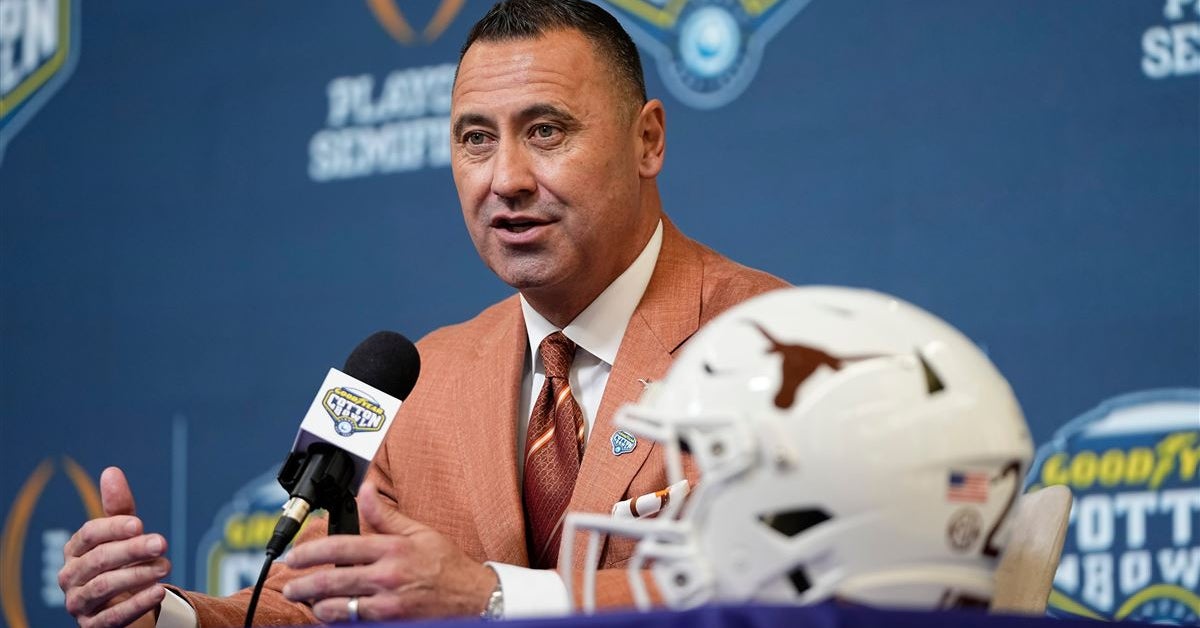
AUSTIN, Texas — Texas coach Steve Sarkisian said when it comes to recruiting in the age of NIL revenue sharing, Texas needs prospects to look at “long-term money” instead of “short-term money.”
On the 3rd & Longhorn podcast with former Longhorn football players Jeremy Hills, Derrick Johnson, Alex Okafor, Fozzy Whittaker and Rod Babers as well as host Nick Shuley, Sarkisian said prospects might need to be willing to take a little less money up front to become a Longhorn for the “opportunity to create more opportunities” once they’re at Texas.
“Maybe we get a guy for a little bit less than another school’s offering, especially in this day and age,” Sarkisian said, referring to the House vs. NCAA settlement, which caps NIL revenue sharing between schools and their student-athletes at $20.5 million beginning July 1. “That’s gotta happen, because every Power Four school’s got, at minimum, the same amount of money [$20.5 million].
“So, if we’re trying to assemble a group of talented people, well, every talented person is going to require some money. If I don’t have as many talented people, I’m going to have more money to offer Johnny.
“Well, Johnny has to see the forest through the trees a little bit and say, ‘This is short-term money. I want to look at more of the long-term money. And Texas is going to provide me an opportunity to create more opportunities, whether it’s on the field, off the field, degree, NIL, brand-building, player development opportunity in the NFL.
“What does that look like for me? I’ve got a lot more lanes to go achieve that [at Texas] than just this spot over here that’s got one avenue.’
“We’ve got a lot of avenues for guys to come here and be really successful. So there’s a lot to it. But like I said, I think we have the best product in the US. I don’t think there’s another school that can say that. And, oh, by the way, Forbes magazine last year, wrote [Texas and Rice are] the new Ivy League.
“Name another school who’s getting compared to Harvard, Yale and Princeton, but on the flip side, is getting compared to Georgia, Ohio State and Alabama on the football field?”
Sarkisian gave a list of things Texas can uniquely offer a recruit in addition to NIL money, including back-to-back College Football Playoff semifinal appearances; having the most players selected in the NFL Draft the last two years (23), including six D-linemen and five running backs; reaching the SEC title game in Year 1 in the league; as well as three straight top-five recruiting classes, including the top-ranked class in 2025.
NIL
Should NCAA be granted limited antitrust exemption in rev-share era?
In a world where many questions regarding collegiate student-athlete compensation have been answered, even greater concerns are looming. On Monday, Texas A&M Director of Athletics Trev Alberts spoke to the media regarding Texas A&M’s future financial plan in the wake of the NCAA v. House settlement. While the mysteries of athlete compensation have been solved, it […]
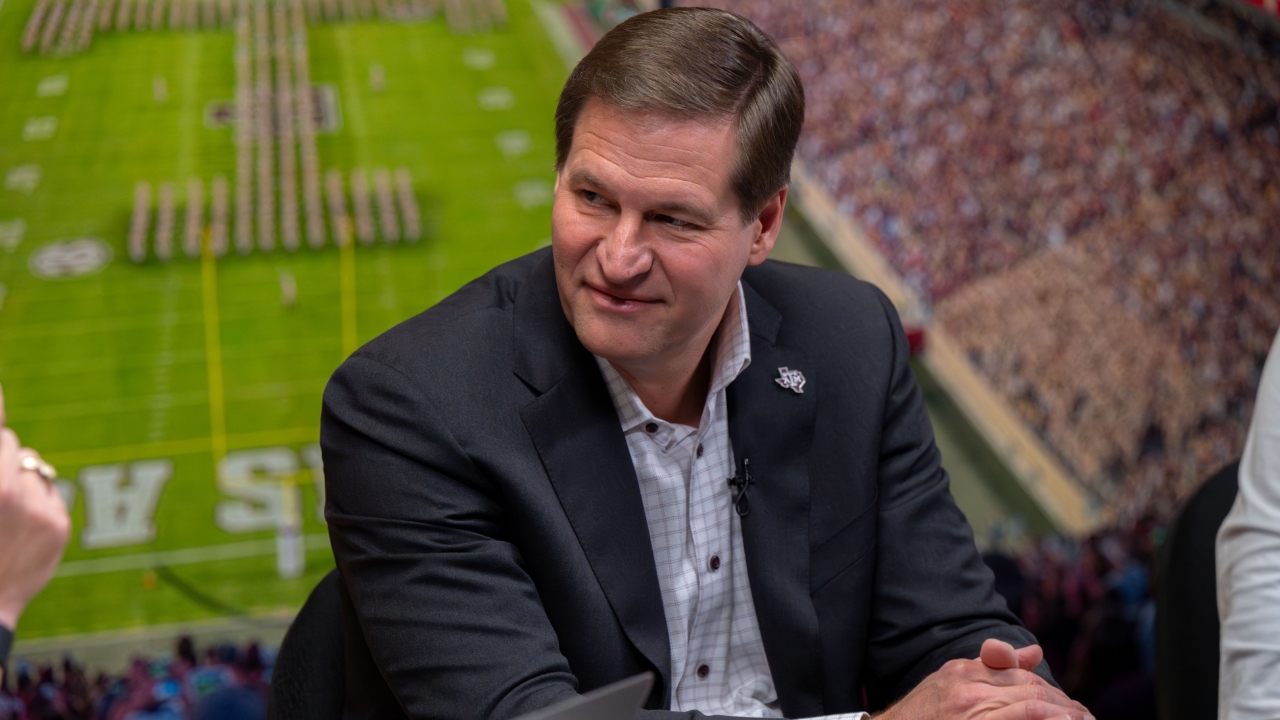
In a world where many questions regarding collegiate student-athlete compensation have been answered, even greater concerns are looming.
On Monday, Texas A&M Director of Athletics Trev Alberts spoke to the media regarding Texas A&M’s future financial plan in the wake of the NCAA v. House settlement.
While the mysteries of athlete compensation have been solved, it is far from over, as the NCAA is still having to deal with a number of lawsuits, and NIL regulation is still a massive concern to athletic directors and coaches across the country. With NCAA president Charlie Baker pushing Congress for a limited antitrust exemption to protect college sports from a slew of lawsuits, Alberts offered a differing opinion.
“We don’t need broad antitrust exemptions,” the Aggie AD said. “We need a skinny NIL bill that will basically do the foundations of what we need to be able to not live in a litigious environment every day, where we’re playing defense. We need to be playing offense.”
Alberts is correct in acknowledging that college sports need reformation in the form of NIL legislation, but with lawsuits piling up and the future of college athletics becoming more unstable with each passing day, is an antitrust exemption needed in order to achieve litigation-free player compensation AND competitive balance?
“We don’t need broad antitrust exemptions. We need a skinny NIL bill that will basically do the foundations of what we need to be able to not live in a litigious environment every day, where we’re playing defense. We need to be playing offense.”
– Director of Athletics Trev Alberts
The reason the House settlement came around is that the NCAA couldn’t handle getting sued and losing lawsuits forever.
Alston v. NCAA, Carter v. NCAA, Hubbard v. NCAA, etc. These were almost all losing battles, and every dollar that the NCAA has to spend on legal fees is a dollar not being directly invested into collegiate sports. Despite the efforts to repair damages with this settlement, it is far from perfect. A large downside of this settlement, as it was explicitly said by Judge Claudia Wilken, is that it does not protect the NCAA from future lawsuits.
Aside from the Title IX lawsuits that are already on the table in just the first few weeks, there are a few more aspects of the settlement that people could challenge in court:
- “Anti-competitive” nature of having a salary cap
- NIL Go clearinghouse process and restrictions
This raises the question of how do we avoid these exhausting lawsuits while also ensuring competitive balance with NIL?
Right now, there seem to be two clear solutions:
- The NCAA is granted Congressional protection (antitrust exemption)
- The NCAA and its athletes come to a collective bargaining agreement (CBA)
Let’s break down what each of those pathways would entail.
Limited Antitrust Exemption
A limited antitrust exemption granted by Congress would allow the NCAA to operate in a capacity that shields it from lawsuits. An antitrust exemption would likely allow the NCAA to have ultimate say when it comes to player compensation, NIL compensation, transfer portal regulations and more. It would also allow the NCAA to preserve the concept of “amateurism” and not claim athletes as employees, which would have its benefits.
While this kind of congressional protection could allow the NCAA to set and enforce uniform guidelines to stabilize college athletics without the fear of lawsuits, there are downsides. It could potentially allow the NCAA and its schools to not comply fully with Title IX. This antitrust exemption would also likely take away any and all ability for athletes to negotiate for fair compensation and allow for the NCAA to operate behind a veil with no obligation to be transparent and accountable for its actions.
Collective Bargaining Agreement (CBA)
Collective bargaining through employment is often seen as a middle ground to antitrust exemption that allows for athletes to have greater bargaining power. The NBA and NFL both have collective bargaining that dictates how revenue is split between owners and players, scheduling, drug policies, player safety and more. It is not exactly apples to apples when comparing these professional leagues to college athletics because not every sport generates revenue. Plus, you’re talking about just 1,700 players that play the same sport the way that the NFL is. You’re talking about over 540,000 student athletes across more than 20 sports (both men’s and women’s). This CBA would be much more complicated than anything the professional sports leagues have seen.
You’re talking about over 540,000 student athletes across more than 20 sports (both men’s and women’s). This CBA would be much more complicated than anything the professional sports leagues have seen.
– Author
However, if every athlete agrees on certain standards, you can distribute compensation fairly without a fear of lawsuits while also agreeing on a more stable middle ground in terms of NIL and transfer portal regulation that would stretch uniformly across every school in the league. There wouldn’t be a need for Congress to write new NIL laws that preempt state laws. The NCAA, with the help of athletes and other representatives, could agree on regulations that would be enforced by the NCAA and difficult to challenge in court because they would be a part of the CBA. Even though Deloitte’s NIL Go clearinghouse does some auditing and regulating now, the process and “fair market” evaluations are not necessarily protected from litigation. Also, it’s not certain that complete competitive balance would be achieved through this, as some schools may not be able to afford paying athletes as “employees” if they have to meet certain minimum wage standards. You’re already seeing Olympic sports get cut from many schools, but a CBA could have the potential to accelerate those deficits and prevent many collegiate athletes from participating in sports at all.
The question is, with the NCAA trying to avoid lawsuits while athletic directors and coaches are demanding clear, uniform and enforced NIL regulations… could a limited antitrust exemption or a CBA be the answer to all of this?
Either way, greater power would be granted to the NCAA (or some other entity) that would allow it to operate without fear of litigation.
It could be a good thing for college sports to have basic uniformity where everyone is happy with their compensation, as well as competitive balance.
However, can we trust the NCAA to operate efficiently, transparently and with the athletes’ best interest in mind?
They have had 119 years to prove that and have, thus far, failed.
NIL
South Carolina softball reloads with WCWS star catcher from Ole Miss
There’s another portal win for the South Carolina softball team. Former Ole Miss catcher Jamie Mackay has officially committed to the Gamecocks marking the eighth addition to the 2025 transfer class. It is also the second Ole Miss Rebel to flip to South Carolina, following teammate Tate Davis to the Gamecocks. Mackay has one year […]
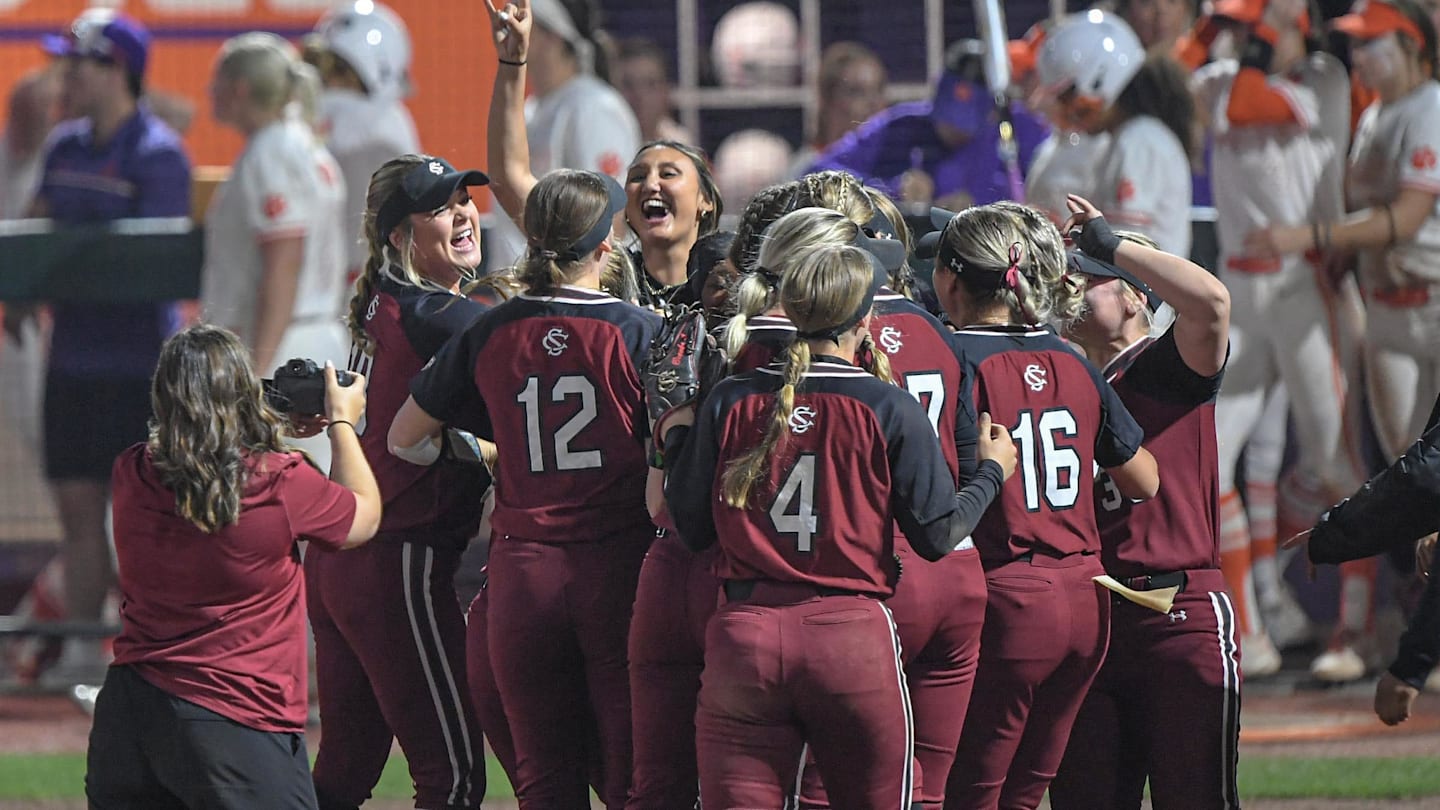
There’s another portal win for the South Carolina softball team. Former Ole Miss catcher Jamie Mackay has officially committed to the Gamecocks marking the eighth addition to the 2025 transfer class. It is also the second Ole Miss Rebel to flip to South Carolina, following teammate Tate Davis to the Gamecocks. Mackay has one year of eligibility remaining.
Mackay was a key part of the postseason run for the Rebels, appearing in 36 games during the season. She started 20 of those games, batting a .284 with 12 RBIs, 19 hits, two homeruns, and six runs scored. She also delivered one of the most memorable moments of the Women’s College World Series, delivering a game-tying 2-RBI single in the seventh inning against Oregon.
In her career, Mackay has a .262 average with six homeruns, 16 doubles, and 37 RBIs in 252 at-bats across three seasons. She is versatile too, starting 45 games in right field in 2024 after spending the majority of her career as a catcher.
Mackay joins a star-studded transfer class that includes:
- Josey Marron (Mississippi State RHP)
- Tori Ensley (NC State OF)
- Tate Davis (Ole Miss INF)
- Alyssa Hovermale (Florida INF)
- Emma Friedel (Kennesaw State P)
- Precious Bross (Georgia INF)
With Mackay now on the roster, Gamecock head coach Ashley Chastain-Woodard continues to build a championship-caliber team. And coming off the program’s first-ever Women’s College World Series appearance, this Gamecock squad will be ready for another run at a title.
NIL
LSU Baseball Linked to Coveted Top
Jay Johnson and the LSU Tigers are set to navigate a critical offseason in Baton Rouge with the program looking to reload the roster for the 2026 season. After capturing the 2025 National Championship on Sunday, Johnson and Co. have already been linked to multiple available players in the NCAA Transfer Portal. That includes University […]
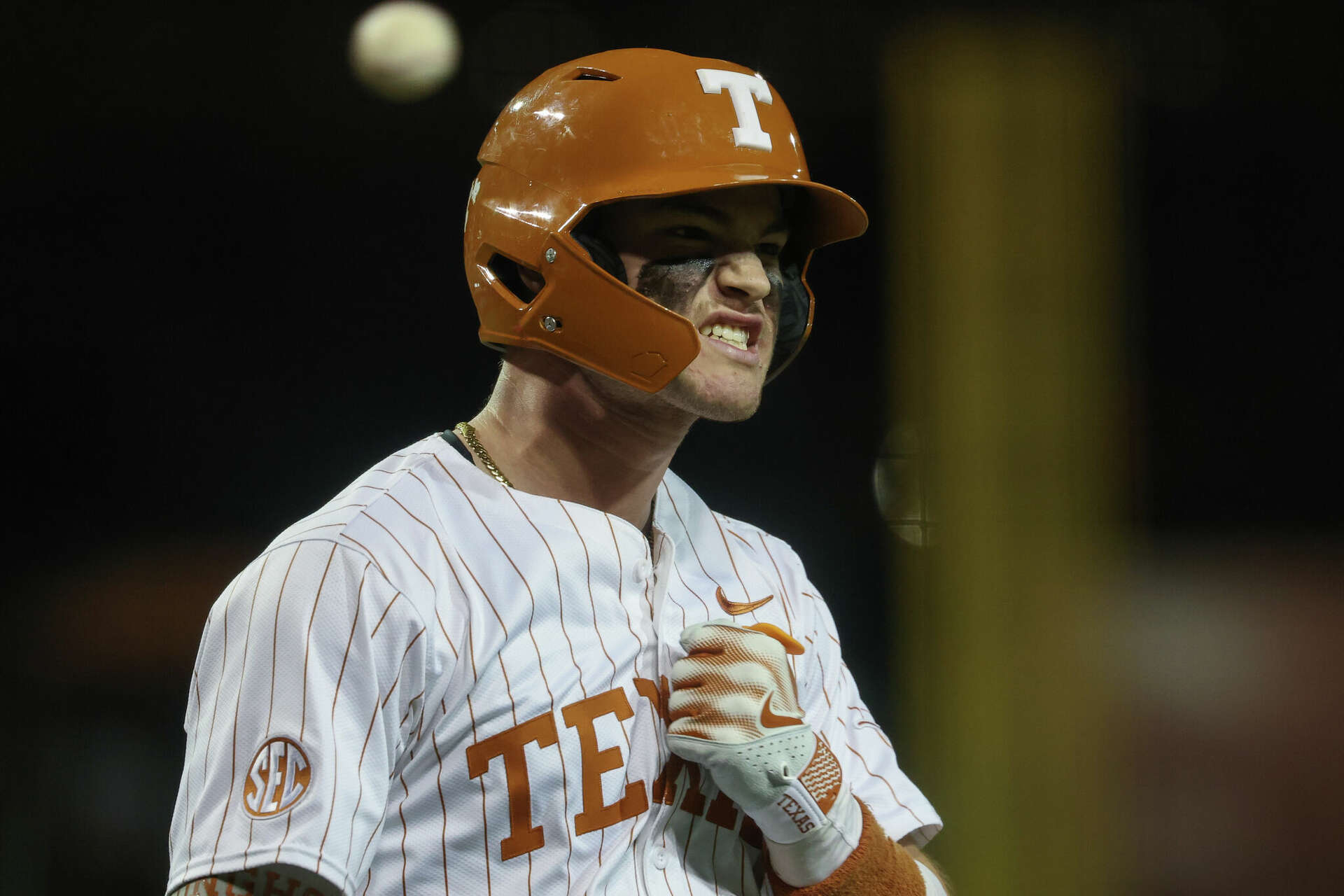
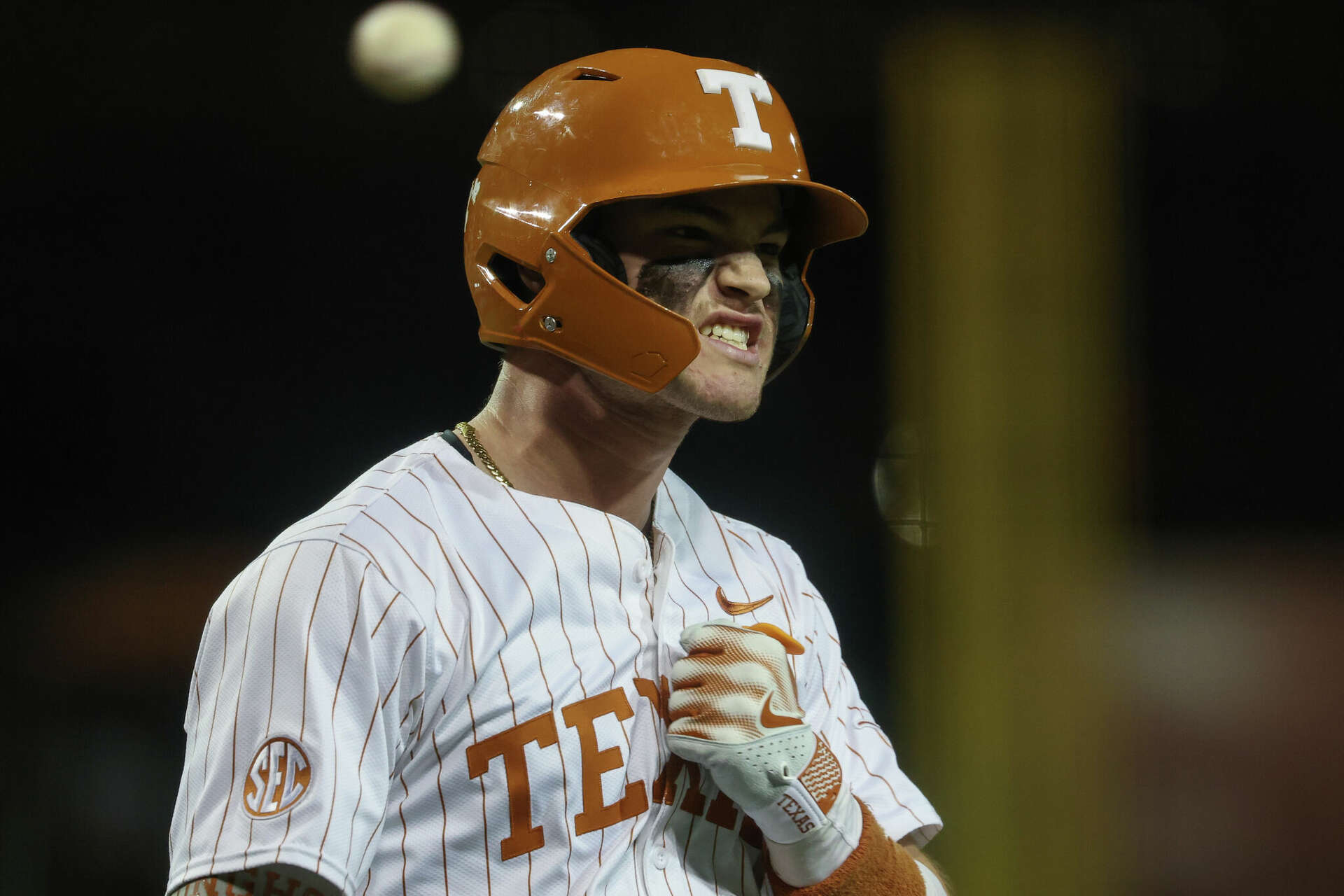
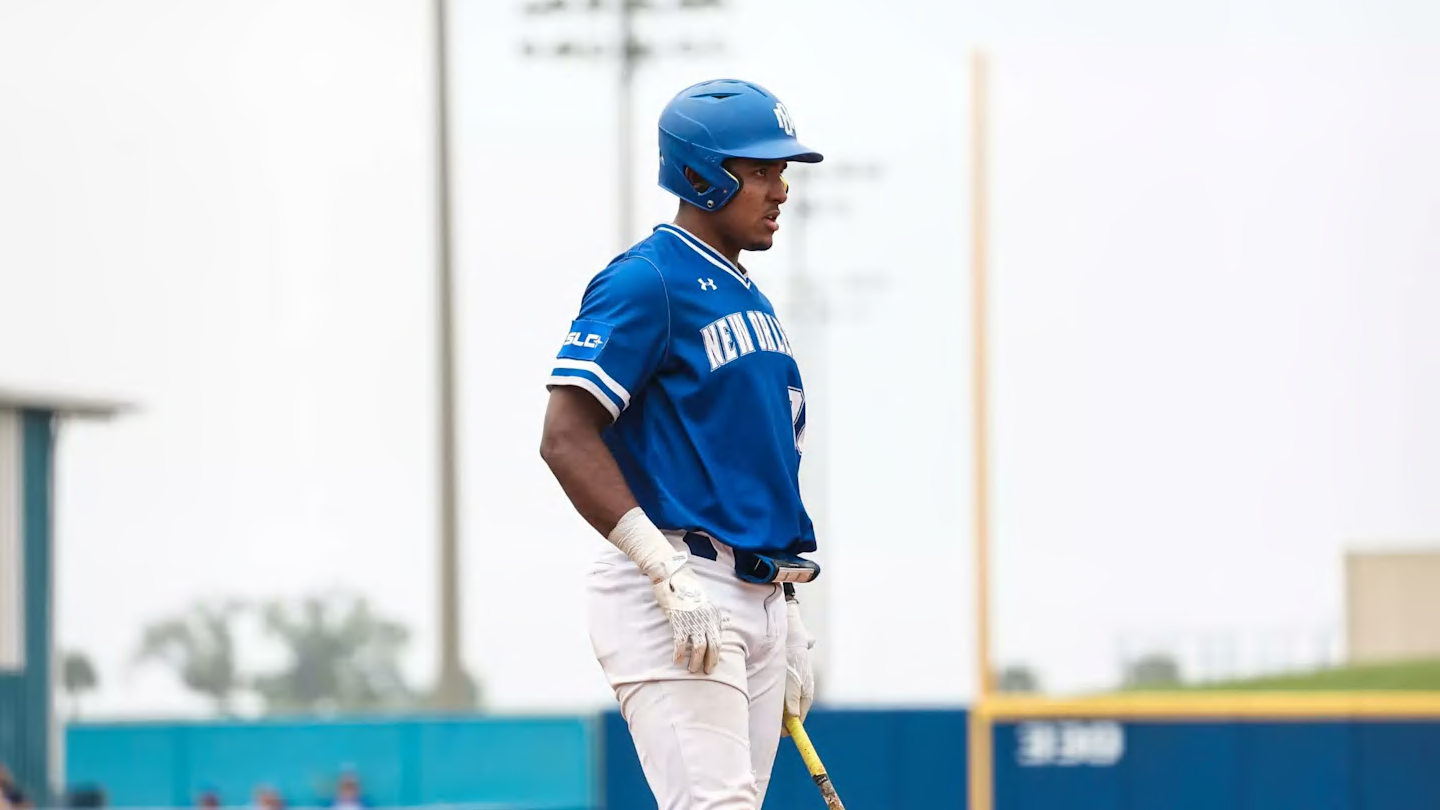
Jay Johnson and the LSU Tigers are set to navigate a critical offseason in Baton Rouge with the program looking to reload the roster for the 2026 season.
After capturing the 2025 National Championship on Sunday, Johnson and Co. have already been linked to multiple available players in the NCAA Transfer Portal.
That includes University of New Orleans star, Bryce Calloway.
Calloway, a Top-10 available prospect in the NCAA Transfer Portal, has quickly become one of the top names to monitor this offseason with a myriad of schools in the mix.
Johnson and Co. are reportedly in contact with the elite-level prospect that can do it all on the diamond.
Calloway can play first base, third base, outfield and has taken the mound as a right-handed pitcher during his time in college.
The slugger hit .390 with 18 homers and 63 RBIs along with a 1.206 OPS this past season. Calloway also made 20 appearances on mound with a fastball up to 93 mph.
TRANSFER: This is a big one. @PrivateersBSB two-way superstar Bryce Calloway has entered the portal as a graduate transfer. Calloway hit .390 with 18 homers and 63 RBIs + a 1.206 OPS this past season. Also made 20 apps on bump w/ FB up to 93.
Profile: https://t.co/p931hAMRJ0… pic.twitter.com/jJMyyy8COQ
— Kendall Rogers (@KendallRogers) June 3, 2025
LSU continues its pursuit of reloading in the NCAA Transfer Portal with another pair of players on the program’s radar.
The Reported Portal Targets [2]:
RHP Landon Mack: Rutgers
Rutgers freshman right-handed pitcher Landon Mack entered the NCAA Transfer Portal this month after one season with the Scarlet Knights.
Mack, one of the top arms available in the free agent market, has multiple programs pursuing his services as it stands. That includes the LSU Tigers with Johnson and Co. in pursuit.
The talented right-hander rounded out his true freshman campaign with Rutgers after tossing 80.1 innings pitched where he logged 70 strikeouts to 17 walks with a 4.03 ERA.
Mack will be a player to keep tabs on as his recruitment process ramping up this week.
2B Jarren Advincula: Cal
Cal second baseman Jarren Advincula is viewed as one of the top players available in the NCAA Transfer Portal with the LSU Tigers in he mix, according to On3 Sports.
In 2024, Advincula led Cal with a .325 batting average and was second on the team in both runs scored with 44 and hits with 69.
Fast forward to his second season with the Golden Bears and he was second on the team in batting with a .342 average.
He led the team in steals with 13 (in 15 attempts) and hits with 81. Advincula tied for the team lead in runs scored with 48, and had six home runs and 33 RBIs.
Now, he’s in the Transfer Portal with a slew of SEC and ACC programs intensifying their pursuit.
LSU has added a pair of players via the NCAA Transfer Portal to this point as the program begins its quest at reloading the roster.
The Additions [2]:
Brayden Simpson: Infielder
The LSU Tigers landed a commitment from High Point infielder Brayden Simpson in June as the program’s first portal addition.
Simpson, one of the top prospects in the NCAA Transfer Portal, is coming off of a career season in North Carolina.
The coveted infielder primarily handled business as a third baseman for High Point this past season where he shined for his Panthers squad.
Simpson had a dominant two-year stretch at High Point with his 2025 campaign quickly putting his name on the map.
He rounded out the season batting .389 with 22 home runs, 77 RBI and a .477 on base percentage this past season.
Simpson is a Swiss Army Knife in the infield and has also spent some time at first base in 2024 and second base in 2023.
In 2024, the talented High Point transfer started in all 62 games where he batted .300 with 12 home runs and 45 RBI. He started in 58 games this year.
Seth Dardar: Infielder
Dardar, a Louisiana native, began his career at Columbia prior to making the move to join the Kansas State Wildcats.
During the 2025 season, he logged a team best .326 batting average with 18 doubles and a 1.065 OPS.
A consistent hitter, Dardar tallied 60 hits, 45 RBI and 13 home runs last season for his Wildcats squad.
The New Orleans (La.) Holy Cross standout started in 50 games for Kansas State on his way to becoming a coveted transfer in the portal.
Now, he’s made his move. Dardar will head home to suit up for the Bayou Bengals in his final season of eligibility.
LSU Football Wide Receiver Donating NIL Money Back to High School for Title Rings
LSU Football Holds Commitments From a Pair of Top-10 Wide Receivers in America
Brian Kelly’s Take: LSU Football Searching for Ideal Starting Offensive Line Rotation
Follow Zack Nagy on Twitter: @znagy20 and LSU Tigers On SI: @LSUTigersSI for all coverage surrounding the LSU Tigers.
NIL
Cooper Flagg Inks Deal With BOSS, Rocking Designer Suit For NBA Draft
Cooper Flagg Dressin’ Like A ‘BOSS’ For Draft Partners W/ Fashion Brand Published June 25, 2025 3:11 PM PDT Cooper Flagg is reaping the benefits of being the (super likely) No. 1 overall pick — the former Duke star is BOSS’ newest ambassador … and is commemorating the deal by repping the brand at the […]


Cooper Flagg
Dressin’ Like A ‘BOSS’ For Draft
Partners W/ Fashion Brand
Published
Cooper Flagg is reaping the benefits of being the (super likely) No. 1 overall pick — the former Duke star is BOSS’ newest ambassador … and is commemorating the deal by repping the brand at the NBA Draft!!
All eyes will be on Flagg at the Barclays Center on Wednesday … with his name expected to be called when the Dallas Mavericks submit their selection in a matter of hours.
TMZ Sports has learned Flagg — the National College Player of the Year — chose to keep it slick and smooth with an Italian three-piece stretch wool suit by BOSS, along with a slim-fit shirt and Italian-made silk jacquard tie.
We’re told the BOSS suit, shirt and tie came with a total price tag of over $1,200 … but as an ambassador, we take it the look was on the house.
“As one of the most exciting young talents in the sport, Flagg brings a bold sense of determination, drive, and discipline that perfectly reflects the brand’s ethos: Be Your Own BOSS,” the brand spokesperson told us on Wednesday.
“All eyes will be on his next chapter. Beyond the Draft, Cooper will be styled in BOSS for selected appearances and exclusive brand moments, embodying the spirit of the next generation of athletes redefining modern ambition and personal success.”
Flagg, 18, is thrilled to team up with one of the top fashion brands, saying the connection between him and BOSS makes sense.
“BOSS stands for confidence and individuality, which is what I bring to the game,” Flagg said. “Rocking BOSS for the Draft is only the beginning of this journey.”
Flagg was the most-watched college basketball player last season, averaging 19.2 points, 7.5 rebounds, and 4.2 assists per game in his freshman year.
His college success earned him several NIL deals, including a shoe pact with New Balance.
Now, he’s BOSS’d up … but after the draft, we’re pretty sure there will be a lot more to come.
NIL
College quarterbacks turning NIL earnings into venture capital investments
College athletes are channeling their NIL earnings into venture capital investments. Front Office Sports reports that three college quarterbacks — including a potential top-five pick — are putting their money into VC-backed start-ups. South Carolina’s LaNorris Sellers — projected as one of the top signal-callers in the 2026 NFL Draft — Southern Methodist University’s Kevin […]
College athletes are channeling their NIL earnings into venture capital investments. Front Office Sports reports that three college quarterbacks — including a potential top-five pick — are putting their money into VC-backed start-ups.
South Carolina’s LaNorris Sellers — projected as one of the top signal-callers in the 2026 NFL Draft — Southern Methodist University’s Kevin Jennings and Kansas State University’s Avery Johnson have invested in The Cashmere Fund. According to Front Office Sports, the fund is a “Nasdaq-listed venture capital fund that allows non-accredited investors to invest in VC-backed start-ups.”
Buffalo Bills players Josh Allen and Damar Hamlin are also investors.
“There was some business savvy in all of them,” Elia Infascelli, CEO of Cashmere, told Front Office Sports. “Avery Johnson is a business major, for example. They didn’t need to do this, but they wanted to.
“They are investors in the fund just like any other person would invest in the fund.”
Cashmere is working with college athletes to bring more attention to their fund and attract additional investors.
“At 18, 19, or 21, to think about long-term relationships and invest without any immediate upside today, that’s rare,” Infascelli explained.
NIL has created new opportunities for college athletes. For those who won’t turn pro, these ventures offer a path to financial stability beyond their college careers.
-

 Motorsports2 weeks ago
Motorsports2 weeks agoNASCAR Weekend Preview: Autódromo Hermanos Rodríguez
-
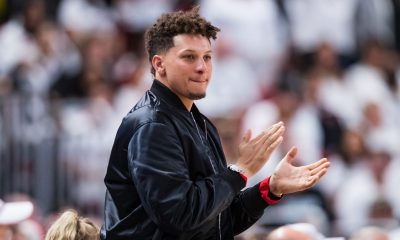
 NIL3 weeks ago
NIL3 weeks agoPatrick Mahomes in OKC for WCWS, praises NiJaree Canady and Texas Tech
-
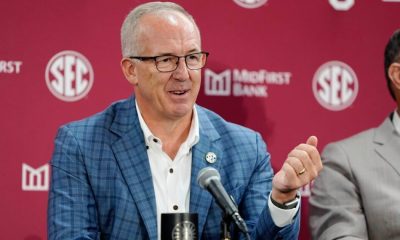
 NIL3 weeks ago
NIL3 weeks agoGreg Sankey fires jab at obstruction rule after controversial WCWS call in Texas vs. Texas Tech
-

 Motorsports2 weeks ago
Motorsports2 weeks agoNASCAR Through the Gears: Denny Hamlin has gas, a border needs crossing, and yes, that’s a Hemi
-

 NIL3 weeks ago
NIL3 weeks agoTexas Tech Pitcher’s $1M Deal Proves What’s Possible For Women
-

 Health3 weeks ago
Health3 weeks agoBold and unapologetic
-

 Motorsports3 weeks ago
Motorsports3 weeks agoChase Elliott’s $12.6 billion backer made major Kyle Larson decision – Motorsport – Sports
-

 NIL3 weeks ago
NIL3 weeks agoShai Gilgeous
-

 NIL3 weeks ago
NIL3 weeks agoMahomes lauds NiJaree Canady, Texas Tech softball at WCWS finals
-

 Motorsports3 weeks ago
Motorsports3 weeks agoJudge rules against Michael Jordan’s team in NASCAR lawsuit – NBC Boston



